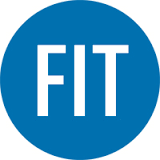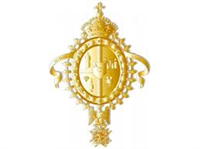What do they do?
Draw and construct sets of precision master fabric patterns or layouts. May also mark and cut fabrics and apparel.
Also known as:
Cutter, Designer, Fabric Cutter, Marker Maker, Pattern Designer, Pattern Maker, Pattern Technician, Production Pattern Maker, Sewing Pattern Layout Technician, Technical Designer
-
-8.8%
Change
Select a state to see its job growth rate ranking300Job Openings
Select a state to see its net job growth ranking
Looking for colleges that offer a specific major? Use the College Match Tool to find your best-matched schools and discover your estimated Net Price!
- High school diploma equivalent (40%)
- Bachelor's degree (18%)
- Less than high school diploma (17%)
- Some college, no degree (16%)
- Associate's degree (6%)
- Master's degree (3%)
- Doctorate or Professional Degree (<1%)
People in this career often have these skills:
- Critical Thinking - Using logic and reasoning to identify the strengths and weaknesses of alternative solutions, conclusions, or approaches to problems.
- Active Listening - Giving full attention to what other people are saying, taking time to understand the points being made, asking questions as appropriate, and not interrupting at inappropriate times.
People in this career often know a lot about:
- Design - Knowledge of design techniques, tools, and principles involved in production of precision technical plans, blueprints, drawings, and models.
- Mathematics - Knowledge of arithmetic, algebra, geometry, calculus, statistics, and their applications.
- English Language - Knowledge of the structure and content of the English language including the meaning and spelling of words, and rules of composition and grammar.
- Production and Processing - Knowledge of raw materials, production processes, quality control, costs, and other techniques for maximizing the effective manufacture and distribution of goods.
- Education and Training - Knowledge of principles and methods for curriculum and training design, teaching and instruction for individuals and groups, and the measurement of training effects.
People in this career often have talent in:
- Visualization - The ability to imagine how something will look after it is moved around or when its parts are moved or rearranged.
- Near Vision - The ability to see details at close range (within a few feet of the observer).
- Originality - The ability to come up with unusual or clever ideas about a given topic or situation, or to develop creative ways to solve a problem.
- Information Ordering - The ability to arrange things or actions in a certain order or pattern according to a specific rule or set of rules (e.g., patterns of numbers, letters, words, pictures, mathematical operations).
- Written Comprehension - The ability to read and understand information and ideas presented in writing.
- Oral Expression - The ability to communicate information and ideas in speaking so others will understand.
- Deductive Reasoning - The ability to apply general rules to specific problems to produce answers that make sense.
- Mathematical Reasoning - The ability to choose the right mathematical methods or formulas to solve a problem.
- Number Facility - The ability to add, subtract, multiply, or divide quickly and correctly.
- Finger Dexterity - The ability to make precisely coordinated movements of the fingers of one or both hands to grasp, manipulate, or assemble very small objects.
- Oral Comprehension - The ability to listen to and understand information and ideas presented through spoken words and sentences.
- Category Flexibility - The ability to generate or use different sets of rules for combining or grouping things in different ways.
People in this career often do these activities:
- Design templates or patterns.
- Program equipment to perform production tasks.
- Draw guide lines or markings on materials or workpieces using patterns or other references.
- Adjust fabrics or other materials during garment production.
- Calculate dimensions of workpieces, products, or equipment.
- Mark products, workpieces, or equipment with identifying information.
- Assemble garments or textile products.
- Position patterns on equipment, materials, or workpieces.
- Confer with customers or designers to determine order specifications.
- Inspected printed materials or other images to verify quality.
- Construct patterns, templates, or other work aids.
- Cut fabrics.
This page includes data from:

 Occupation statistics: USDOL U.S. Bureau of Labor Statistics Occupational Employment Statistics
Occupation statistics: USDOL U.S. Bureau of Labor Statistics Occupational Employment Statistics
 Videos: CareerOneStop, USDOL/ETA and the Minnesota Department of Employment & Economic Development
Videos: CareerOneStop, USDOL/ETA and the Minnesota Department of Employment & Economic Development


















